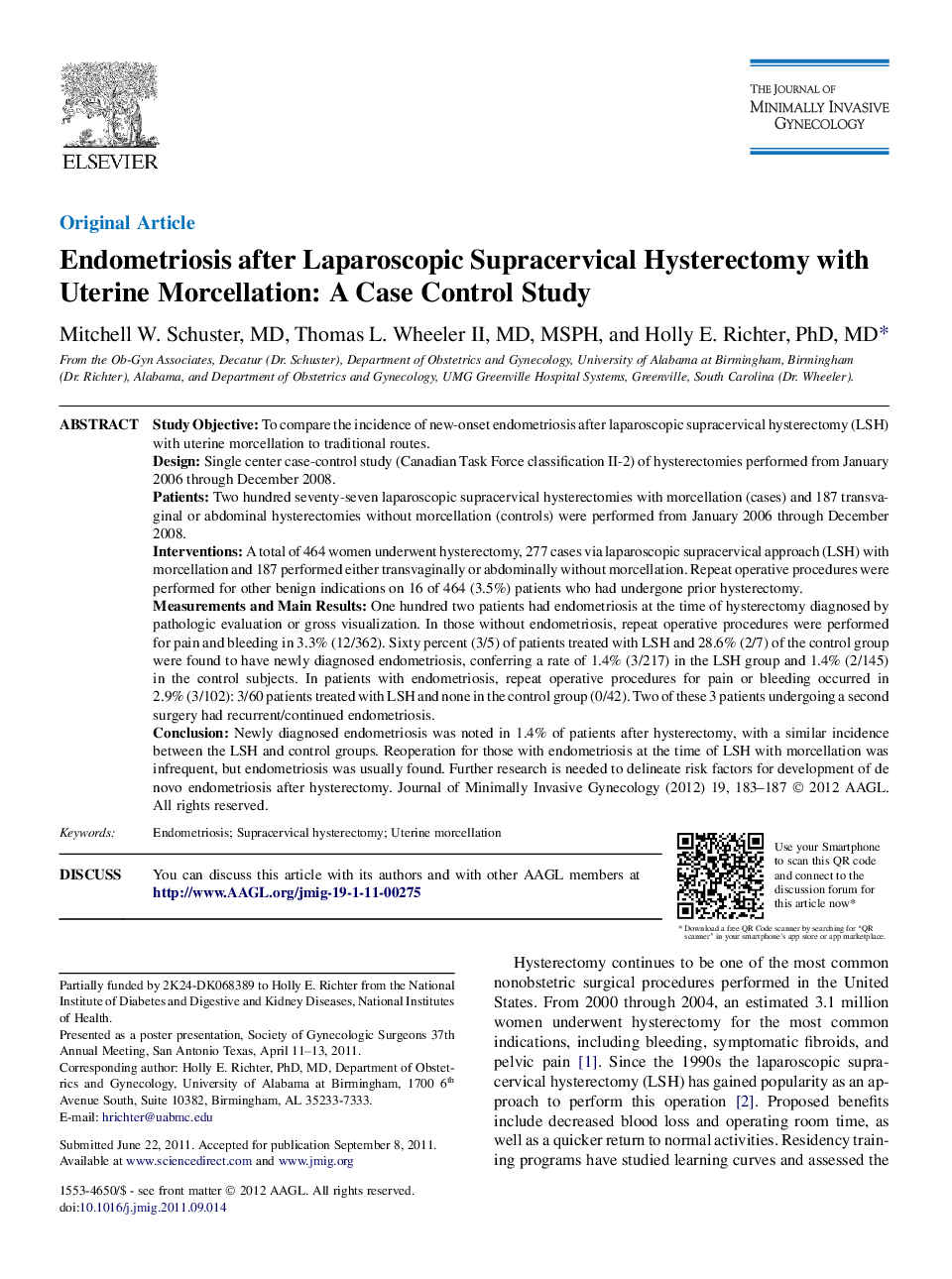| Article ID | Journal | Published Year | Pages | File Type |
|---|---|---|---|---|
| 3958848 | Journal of Minimally Invasive Gynecology | 2012 | 5 Pages |
Study ObjectiveTo compare the incidence of new-onset endometriosis after laparoscopic supracervical hysterectomy (LSH) with uterine morcellation to traditional routes.DesignSingle center case-control study (Canadian Task Force classification II-2) of hysterectomies performed from January 2006 through December 2008.PatientsTwo hundred seventy-seven laparoscopic supracervical hysterectomies with morcellation (cases) and 187 transvaginal or abdominal hysterectomies without morcellation (controls) were performed from January 2006 through December 2008.InterventionsA total of 464 women underwent hysterectomy, 277 cases via laparoscopic supracervical approach (LSH) with morcellation and 187 performed either transvaginally or abdominally without morcellation. Repeat operative procedures were performed for other benign indications on 16 of 464 (3.5%) patients who had undergone prior hysterectomy.Measurements and Main ResultsOne hundred two patients had endometriosis at the time of hysterectomy diagnosed by pathologic evaluation or gross visualization. In those without endometriosis, repeat operative procedures were performed for pain and bleeding in 3.3% (12/362). Sixty percent (3/5) of patients treated with LSH and 28.6% (2/7) of the control group were found to have newly diagnosed endometriosis, conferring a rate of 1.4% (3/217) in the LSH group and 1.4% (2/145) in the control subjects. In patients with endometriosis, repeat operative procedures for pain or bleeding occurred in 2.9% (3/102): 3/60 patients treated with LSH and none in the control group (0/42). Two of these 3 patients undergoing a second surgery had recurrent/continued endometriosis.ConclusionNewly diagnosed endometriosis was noted in 1.4% of patients after hysterectomy, with a similar incidence between the LSH and control groups. Reoperation for those with endometriosis at the time of LSH with morcellation was infrequent, but endometriosis was usually found. Further research is needed to delineate risk factors for development of de novo endometriosis after hysterectomy.
